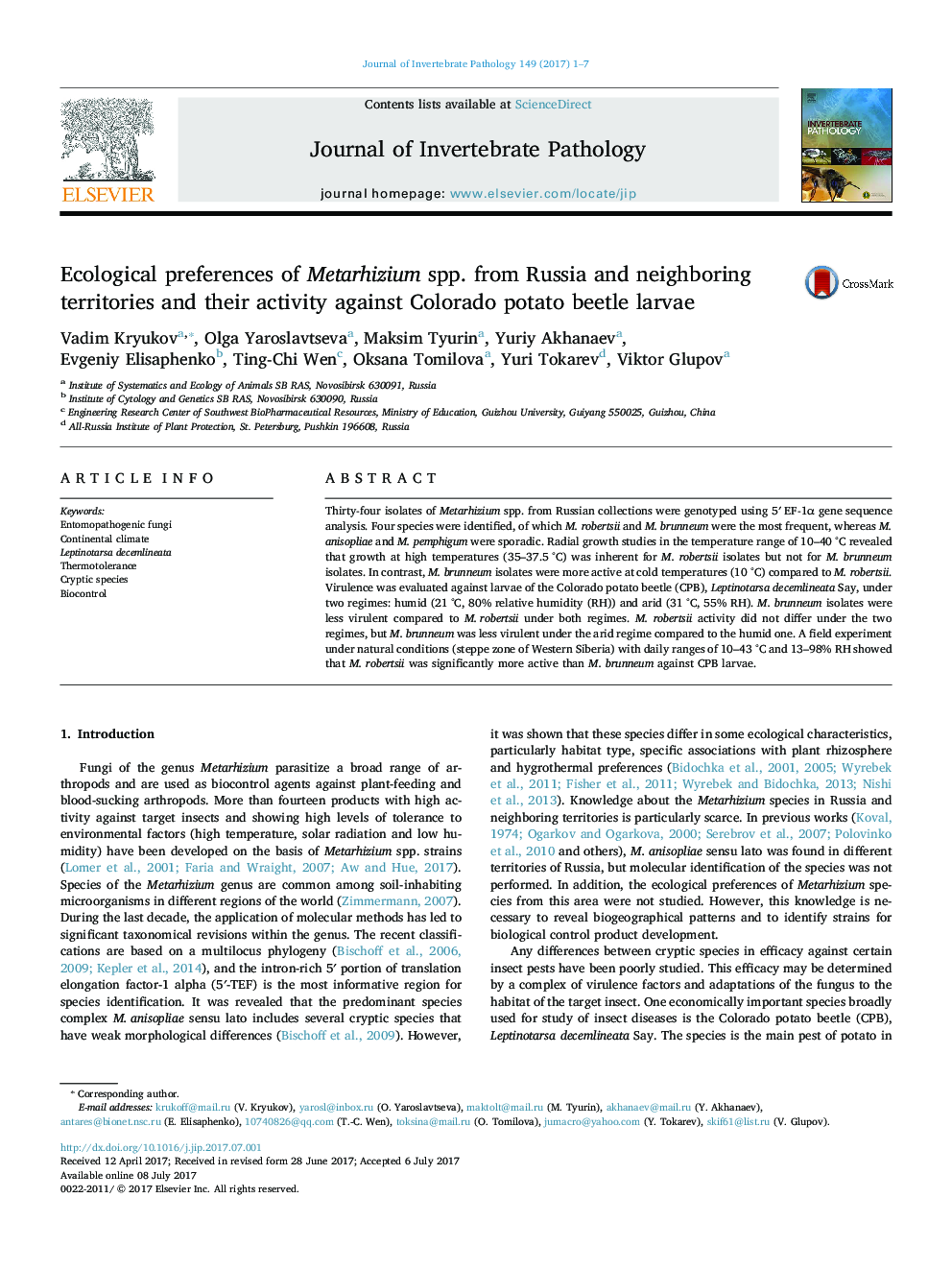| Article ID | Journal | Published Year | Pages | File Type |
|---|---|---|---|---|
| 5766922 | Journal of Invertebrate Pathology | 2017 | 7 Pages |
â¢M. robertsii and M. brunneum are the most frequent Metarhizium species in Russia.â¢Metarhizium robertsii is more adapted to arid conditions compared to M. brunneum.â¢Metarhizium robertsii is more active toward Colorado potato beetle than M. brunneum.
Thirty-four isolates of Metarhizium spp. from Russian collections were genotyped using 5ⲠEF-1α gene sequence analysis. Four species were identified, of which M. robertsii and M. brunneum were the most frequent, whereas M. anisopliae and M. pemphigum were sporadic. Radial growth studies in the temperature range of 10-40 °C revealed that growth at high temperatures (35-37.5 °C) was inherent for M. robertsii isolates but not for M. brunneum isolates. In contrast, M. brunneum isolates were more active at cold temperatures (10 °C) compared to M. robertsii. Virulence was evaluated against larvae of the Colorado potato beetle (CPB), Leptinotarsa decemlineata Say, under two regimes: humid (21 °C, 80% relative humidity (RH)) and arid (31 °C, 55% RH). M. brunneum isolates were less virulent compared to M. robertsii under both regimes. M. robertsii activity did not differ under the two regimes, but M. brunneum was less virulent under the arid regime compared to the humid one. A field experiment under natural conditions (steppe zone of Western Siberia) with daily ranges of 10-43 °C and 13-98% RH showed that M. robertsii was significantly more active than M. brunneum against CPB larvae.
Graphical abstractDownload high-res image (160KB)Download full-size image
